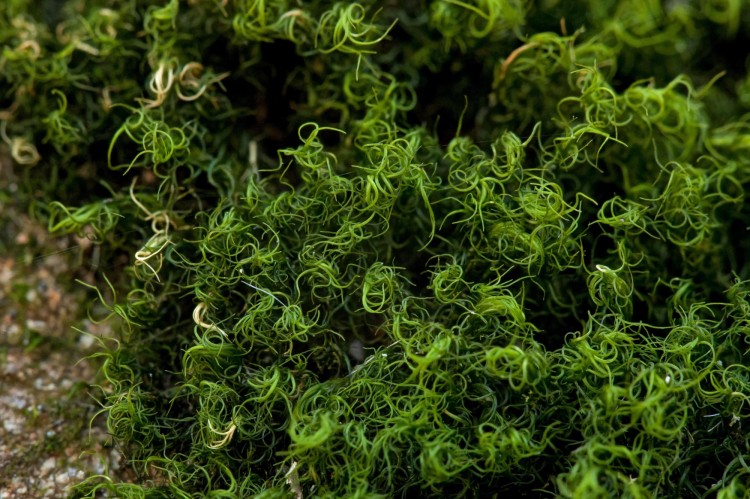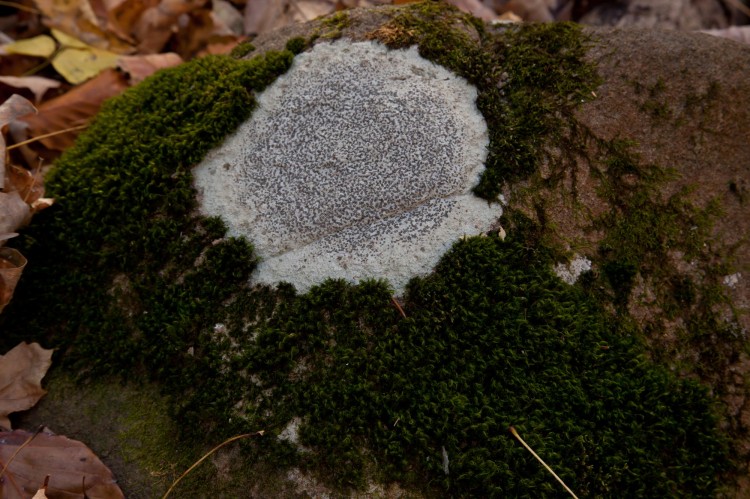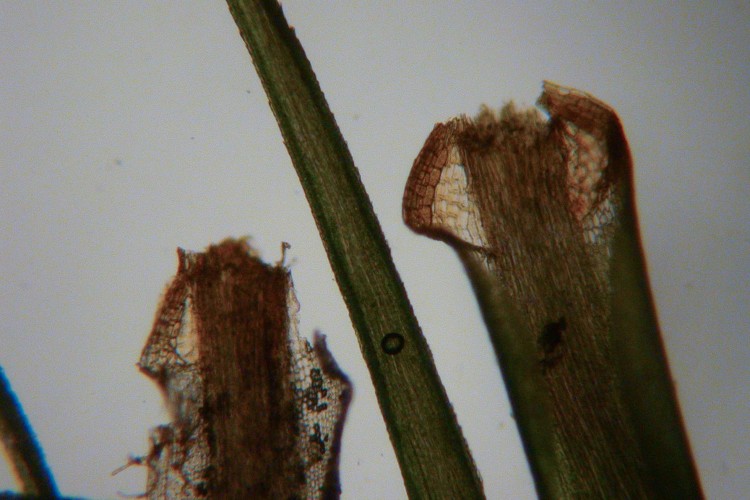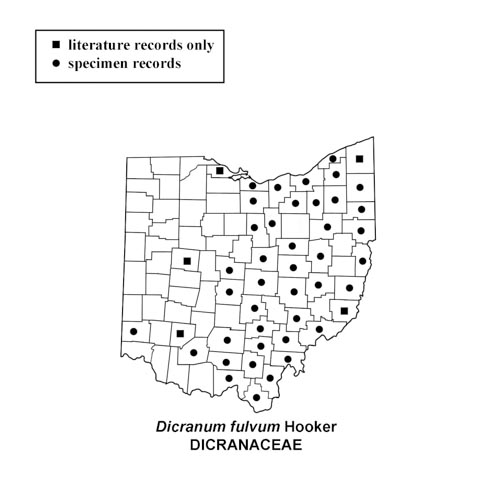Orthodicranum fulvum
(formerly Dicranum fulvum)
“boulder broom moss”

Dicranum fulvum on boulder in woods. Delaware County, Ohio. October 17, 2010.

Dicranum fulvum on boulder with crustose lichen Porpidia albcaerulescens. Delaware County, Ohio. October 17, 2010.

Dicranum fulvum leaves. Nore brown alar cells.
How to recognize boulder broom moss: If you find acid rocks (sandstone or granite) with wooly-looking clumps of dark green or brownish moss, that may well be Dicranum fulvum. The 4-5 mm leaves are crisped when dry and spreading to falcate-secund when wet; they are narrowly lanceolate, concave below and tubular above with a long excurrent (extending past the leaf tip) costa. The upper cells are very rough at the back, and mostly bistratose. The costa is ¼ to 1/3 the width of the leaf at the base with a single layer of enlarged alar cells at either side; the upper costa is most of the upper leaf. The capsule is erect.
Where to find boulder broom moss: Dicranum fulvum is found on bare rocks in woods and by streams.

